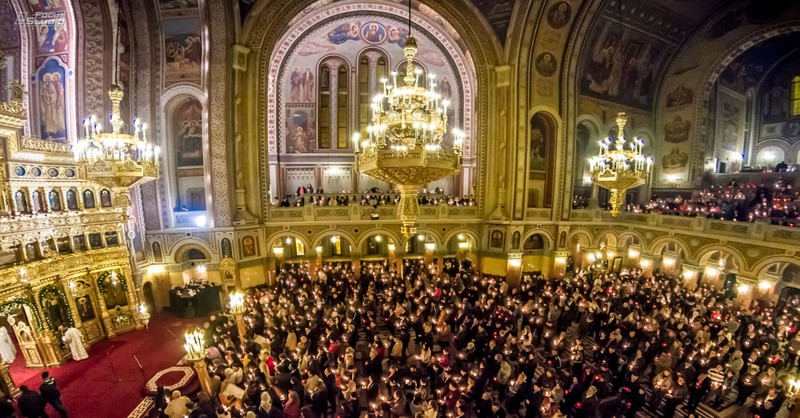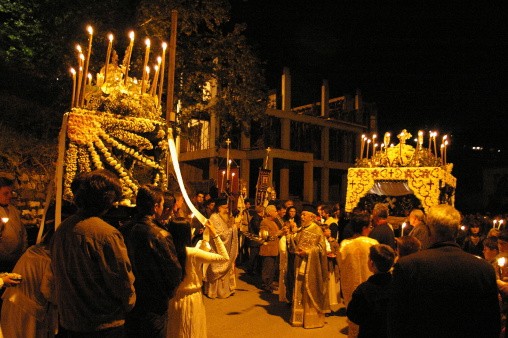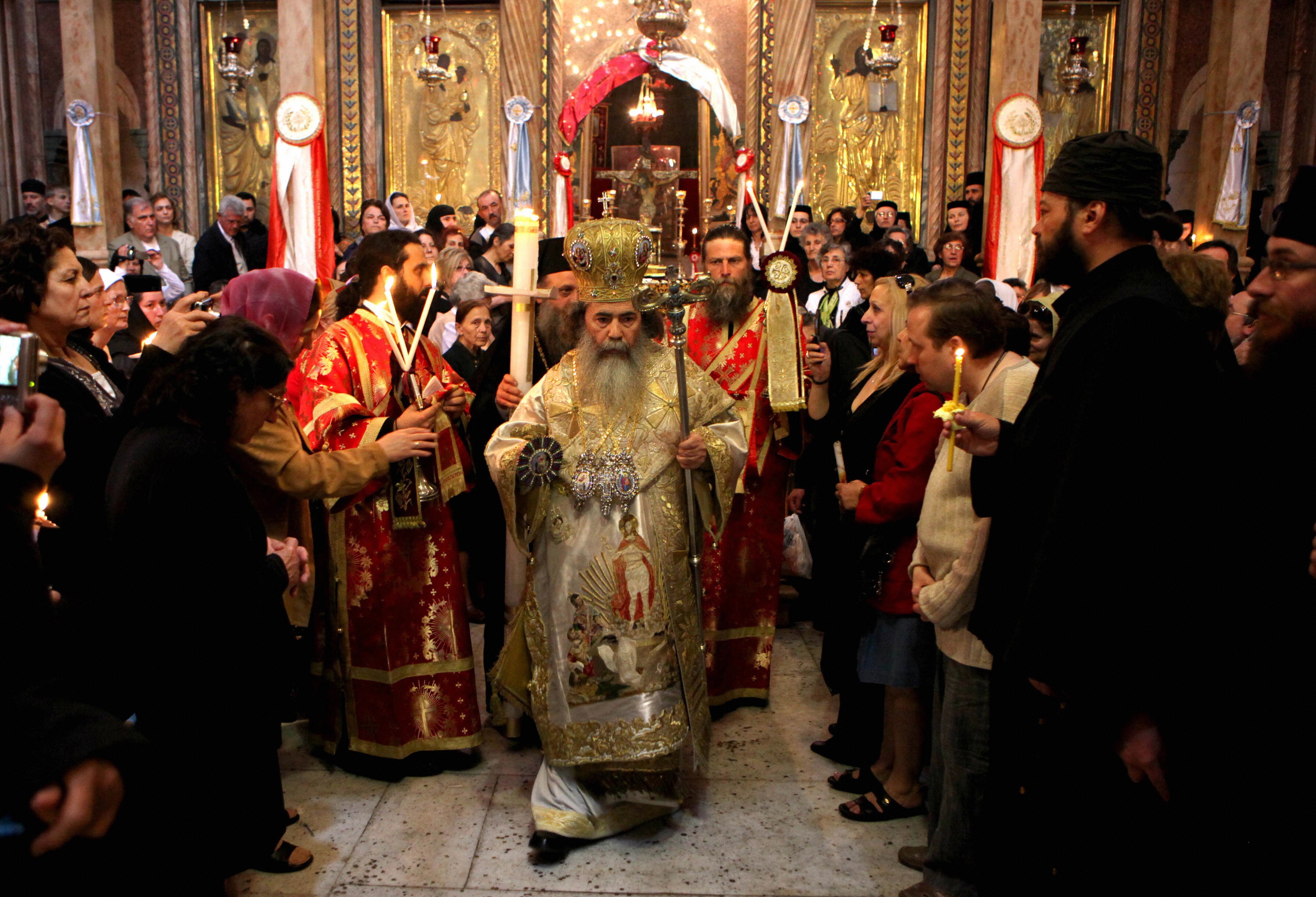The history of the orthodox church, history of the orthodox religion, traditions of the orthodox church, origins of the orthodox church, when did orthodox begin, may day history and traditions, the history and social influence of a potato, the history and culture of pakistan pdf, the history and economics of safe assets,
Easter is one of the most highly celebrated holidays in the Christian faith. While it is widely known that Easter is celebrated differently around the world, most people are only familiar with the Western Easter celebration. Did you know that Orthodox Easter, which is celebrated by the Eastern Orthodox Church, is celebrated on a different date and has its own unique customs? In this article, we'll explore the history and traditions surrounding Orthodox Easter.
A Brief History of Orthodox Easter

Orthodox Easter is celebrated on a different date from Western Easter because the Eastern Orthodox Church follows the Julian calendar instead of the Gregorian calendar. This means that while Western Easter is celebrated on the first Sunday after the first full moon after the vernal equinox, Orthodox Easter is celebrated on the first Sunday after the first full moon following the spring equinox. This often results in Orthodox Easter being celebrated on a different date than Western Easter.
Orthodox Easter is also known as Pascha, which is the Greek word for Passover. In the Orthodox tradition, Pascha is not just a one-day celebration, but a week-long event known as Holy Week. Holy Week begins with the Sunday of the Palms, which commemorates Jesus' triumphal entry into Jerusalem, and ends with the Resurrection on Sunday, the day of Pascha.
Greek Orthodox Holy Week Traditions

The Greek Orthodox Church is one of the largest branches of Eastern Orthodoxy and has its own unique traditions surrounding Holy Week. The week begins with Lazarus Saturday, which commemorates Jesus raising Lazarus from the dead. On Palm Sunday, worshippers will carry palms in a procession to represent Jesus' triumphant entry into Jerusalem.
Maundy Thursday, the Thursday before Easter, is when the Last Supper took place. On this day, Orthodox Christians will remember Jesus washing the feet of his disciples and breaking bread with them. This is also the day when the Twelve Gospels are read in church.
Good Friday is a day of mourning and fasting. The day is spent in somber reflection and prayer, and many Orthodox Christians will not eat any food until after the Resurrection on Sunday. On Saturday night, Orthodox Christians will gather in church for the Paschal Vigil. This service lasts until after midnight when the Resurrection is celebrated with the lighting of candles and hymns of joy.
Traditional Greek Easter Customs

Greek Easter is one of the most exciting times in Greece, with many customs and traditions that have been passed down through generations. One of the most prominent customs is the coloring of Easter eggs. Eggs are dyed red to represent the blood of Christ, the shell representing the tomb where Christ was laid after his crucifixion. On Holy Saturday, these eggs are cracked against each other, representing the earthquake that occurred after Christ's death.
Another Greek Orthodox Easter tradition is lamb roasting, known as kokoretsi. This involves roasting a whole lamb on a spit, along with various other meats and offal. This dish is often served at Easter gatherings and is a symbol of the sacrifice of Christ.
Celebrating Orthodox Easter Around the World

Orthodox Easter is celebrated in many countries around the world, including Russia, Greece, Bulgaria, Serbia, Ukraine, and Romania. Each country has its own unique traditions and customs surrounding the holiday.
In Russia, Easter is preceded by Lent, a 40-day period of fasting and prayer. On Easter Sunday, many Russians will attend an Orthodox Church service and eat traditional Easter foods, such as kulich – a sweet bread made with raisins and candied fruit – and paskha – a creamy dessert made with cottage cheese and served with fruit.
In Greece, Easter is celebrated with great enthusiasm, with many people attending church services throughout Holy Week. On Easter Sunday, families will gather together to enjoy a traditional feast, often including lamb or goat, along with various traditional Greek dishes.
Orthodox Easter Traditions Across Time and Space

Orthodox Easter is a time for celebration, reflection, and remembrance. While the traditions and customs surrounding the holiday may differ from country to country, the core message remains the same – the resurrection of Christ.
Whether you celebrate Orthodox Easter or simply appreciate the uniqueness and diversity of cultures around the world, this holiday is a reminder that the message of hope and renewal is universal, and that we can all come together to share in the joy of new beginnings.
So this year, take some time to learn more about Orthodox Easter and the traditions and customs that make it such a special celebration. Who knows, you may just discover a new way to celebrate one of the most important holidays in the Christian faith.
The History and Traditions of Orthodox Easter
If you are looking for Smorgasbord posts from your archives 2020 – orthodox #easter eggs, you've visit to the right web. We have pictures like Get to know these greek easter traditions, orthodox easter monday in canada, why orthodox easter is the same day as catholic easter this year. Here it is:
Smorgasbord posts from your archives 2020 – orthodox #easter eggs, greek culinary easter traditions explained neos kosmos
Easter greek. Inside the middle east blog archive the day in pictures orthodox. 150 greek easter traditions ideas in 2021 greek easter, easter. Easter orthodox catholic eggs why dates different traditions 2021 sunday april takes thursday monday each place number there every year. What is orthodox easter? origin and date for 2022. Easter orthodox celebrations. Easter orthodox monday jesus canada eggs romania romanian decorated during period mary mother his next beautifully dyed including those red
Also read:
Blog Archive
-
▼
2023
(280)
-
▼
May
(79)
- Nashville Shooting Bell Road
- The History Of Easter Monday And Its Connection To...
- The Continued Fight For Equality: Emancipation Day...
- Mlb News Opening Day 2023
- Shooting Range Near Me Nashville Tn
- What Is An Indictment In Texas
- What Is Investigation In Criminology
- What Is Investigation - Wikipedia
- Opening Day Mlb Lineups
- What Is Conviction Chicken On Doordash
- The History And Traditions Of Orthodox Easter
- Mlb Opening Day 2023 Matchups
- Mlb Opening Day Dfs
- Club Miami Nashville Shooting
- Mlb Opening Day 2023 Scores
- What Is Investigation In Research
- Mlb Opening Day Cubs
- Alvin Bragg Height And Weight
- Easter Monday Traditions Around The World: Parades
- Mlb Opening Day Roster Size
- Comparing Yom HaShoah To Other Holocaust Remembran...
- Mlb Opening Day Favorites
- Shooting At A Funeral In Nashville
- Mlb Opening Day Fixtures
- What Is Investigation And Immersion
- Mlb Opening Day 2023 Texas Rangers
- What Is Investigation And Immersion
- Orthodox Good Friday And The Easter Triduum: Compa...
- Nashville Armory Indoor Shooting Range
- Nashville Shooting Road Rage
- What Is Pre Indictment Hearing
- Mlb Opening Day 2023 Tv
- Boston Marathon And The Marathon Monday Holiday: T...
- Mlb Opening Day 2023 Atlanta Braves
- Nashville Shooting June 2022
- Emancipation Day And DC's Black History: Honoring ...
- Stormy Daniels Where Is She Now
- Skeet Shooting Range Nashville Tn
- Nashville Public Shooting Range
- Alvin Bragg Office Address
- What Is Bill Indictment
- Opening Day Mlb Baseball
- Mlb And New Era
- Nashville Shooting Gas Station
- Mlb Opening Day 2023 Teams
- Mlb Opening Day 2023 Mets
- What Is Conviction Got Questions
- Mlb Opening Day 2023 Braves
- Shooting At Funeral In Nashville
- Mlb Opening Day Quiz
- Mlb Opening Day White Sox
- Opening Day Mlb 2023 Games
- What Kind Of Word Is Indictment
- Nashville Shooting Daily Mail
- Nashville Waffle House Shooting Hero
- Mlb Opening Day National Tv Schedule
- When Is Mlb Opening Day Date
- Mlb Opening Day 2023 Angels
- What Is Conviction Warrant
- Mlb And New Era
- Mlb Opening Day Flag
- What Is Indicted Definition
- What Is Drug Indictment
- What Is An Indictment Quizlet
- Shooting Club Nashville Tn
- Mlb Opening Day Weather
- Shooting In Centennial Park Nashville
- What Is An Indictment Quizlet
- Alvin Bragg Al Sharpton
- Opening Day Schedule For Mlb
- Mlb Opening Day Pick 'em Winner 2023
- Opening Day Schedule For Mlb
- What Is Indictment Noun
- Mlb Opening Day Lineups 2023 Sporcle
- Mlb Opening Day Quiz
- Stormy Daniels News Today
- Outdoor Shooting Range Nashville Tn
- Mlb Opening Day Jays
- Nashville Police Shooting I65
-
▼
May
(79)
Total Pageviews
Search This Blog
Popular Posts
-
Perodua top management, perodua aruz suv, perodua aruz vs toyota avanza, perodua aruz interior, perodua aruz review, perodua aruz price, per...
-
Game of thrones season 8 episode 4 trailer full, game of thrones season 8 episode 4 trailer the last war, game of thrones season 8 episode 4...
-
Contoh soalan peperiksaan w29, contoh soalan peperiksaan tahun 4, contoh soalan peperiksaan online spa, contoh soalan peperiksaan online spa...

